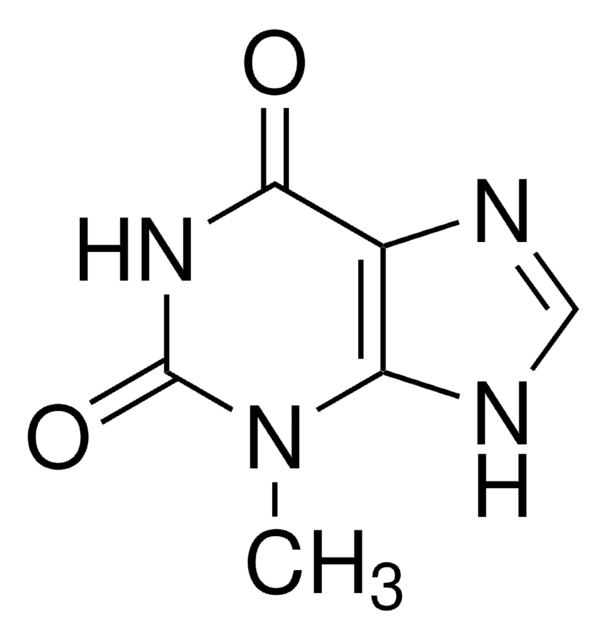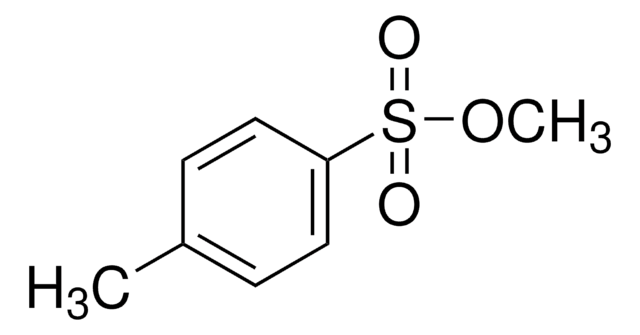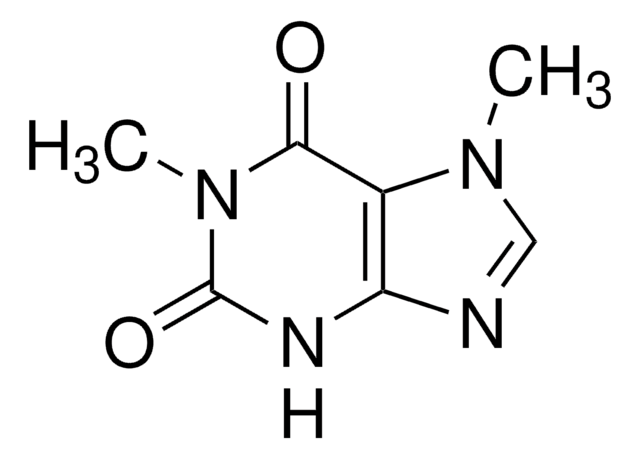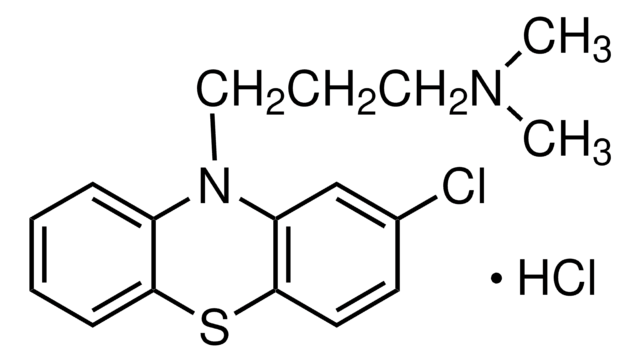40407
1,7-Dimethyluric acid
≥97.0% (HPLC)
Sinonimo/i:
1,7-Dimethyl-2,6,8-trihydroxypurine
Autenticatiper visualizzare i prezzi riservati alla tua organizzazione & contrattuali
About This Item
Formula empirica (notazione di Hill):
C7H8N4O3
Numero CAS:
Peso molecolare:
196.16
Beilstein:
219682
Numero CE:
Numero MDL:
Codice UNSPSC:
12352100
ID PubChem:
NACRES:
NA.22
Prodotti consigliati
Saggio
≥97.0% (HPLC)
Stringa SMILE
CN1C(=O)NC2=C(N(C)C(=O)N2)C1=O
InChI
1S/C7H8N4O3/c1-10-3-4(8-6(10)13)9-7(14)11(2)5(3)12/h1-2H3,(H,8,13)(H,9,14)
NOFNCLGCUJJPKU-UHFFFAOYSA-N
Cerchi prodotti simili? Visita Guida al confronto tra prodotti
Descrizione generale
1,7-Dimethyluric acid is an important metabolite of caffeine. Electrochemical oxidation of 1,7-dimethyluric acid was studied over a wide pH range of 2.2-10.3 at solid electrodes.
Applicazioni
1,7-Dimethyluric acid is the suitable reagent used for the simultaneous determination of plasma levels of theophylline and its metabolites without interference from caffeine or caffeine metabolites by HPLC.
Codice della classe di stoccaggio
11 - Combustible Solids
Classe di pericolosità dell'acqua (WGK)
WGK 3
Punto d’infiammabilità (°F)
Not applicable
Punto d’infiammabilità (°C)
Not applicable
Dispositivi di protezione individuale
Eyeshields, Gloves, type N95 (US)
Scegli una delle versioni più recenti:
Possiedi già questo prodotto?
I documenti relativi ai prodotti acquistati recentemente sono disponibili nell’Archivio dei documenti.
Electrochemical and peroxidase catalysed oxidation of 1, 7-dimethyluric acid and effect of methyl groups on the oxidation mechanism.
Goyal RN, et al.
J. Chem. Soc. Perkin Trans. II, 6, 1153-1159 (1996)
Emma Gracia-Lor et al.
The Science of the total environment, 747, 141331-141331 (2020-08-18)
Smoking cigarettes and drinking coffee are common habits in today's society. However, it is not easy to get up-to-date information on smoking prevalence and caffeine consumption as it is usually obtained from population surveys. To overcome this limitation and complement
J Kizu et al.
Biomedical chromatography : BMC, 13(1), 15-23 (1999-04-07)
A high performance liquid chromatography (HPLC) method has been developed for the simultaneous determination of plasma levels of theophylline and its metabolites without interference from caffeine or caffeine metabolites. The method is simple and of practical use because it is
M T Landi et al.
Cancer epidemiology, biomarkers & prevention : a publication of the American Association for Cancer Research, cosponsored by the American Society of Preventive Oncology, 5(9), 693-698 (1996-09-01)
Cytochrome P4501A2 (CYP1A2) activity may be related to bladder cancer risk through metabolic activation of aromatic amines, such as 4-aminobiphenyl (ABP), to reactive intermediates that can form DNA and hemoglobin (Hb) adducts. In the context of a study on smoking
M E Campbell et al.
Clinical pharmacology and therapeutics, 42(2), 157-165 (1987-08-01)
Systemic caffeine clearance and urinary metabolite profiles were determined in 15 subjects with diverse exposure histories to cytochrome P-450 inducers (cigarette smoke) and inhibitors (oral contraceptive steroids). A correlation was observed between caffeine clearance and a urinary ratio based on
Il team dei nostri ricercatori vanta grande esperienza in tutte le aree della ricerca quali Life Science, scienza dei materiali, sintesi chimica, cromatografia, discipline analitiche, ecc..
Contatta l'Assistenza Tecnica.








